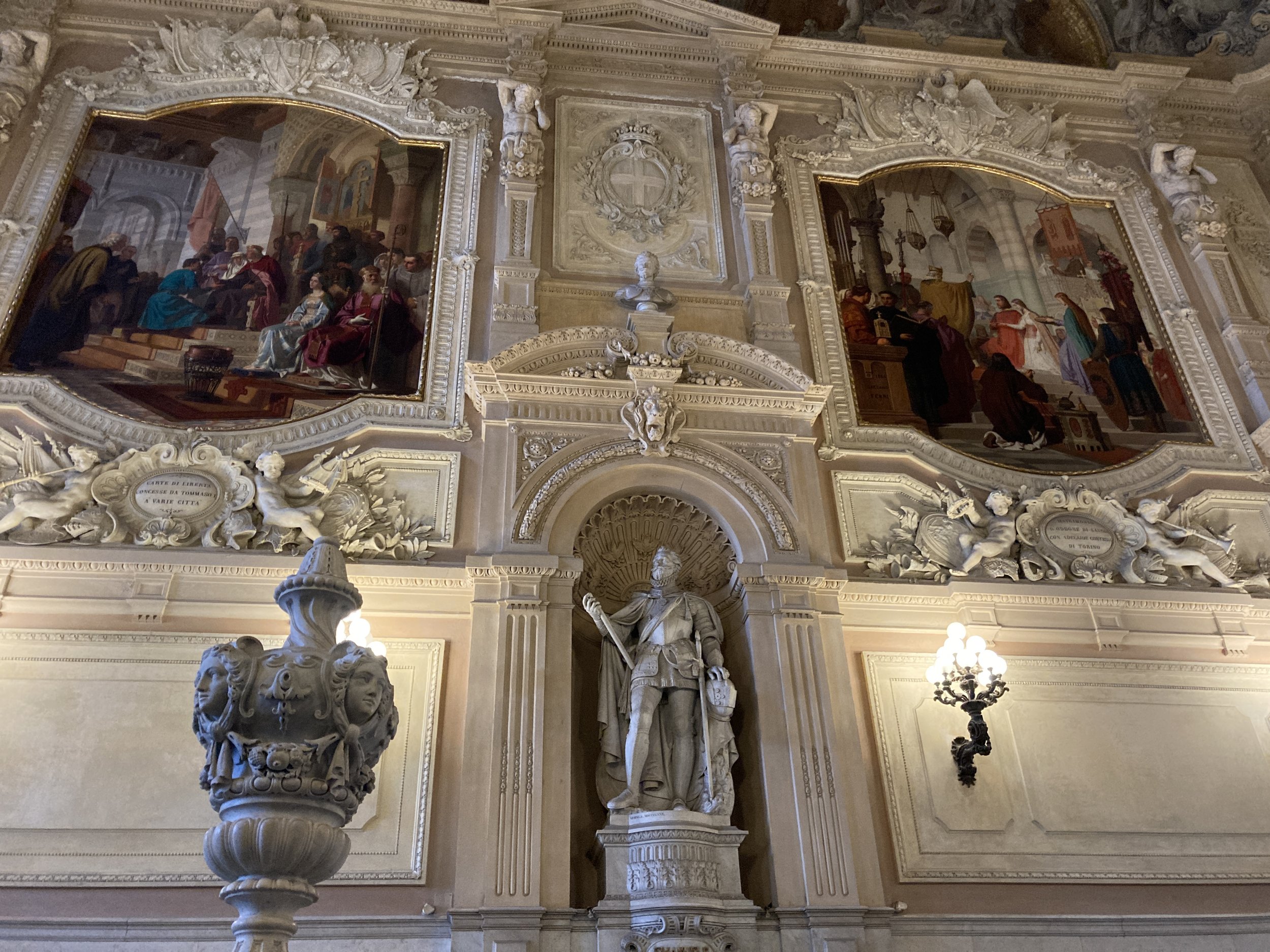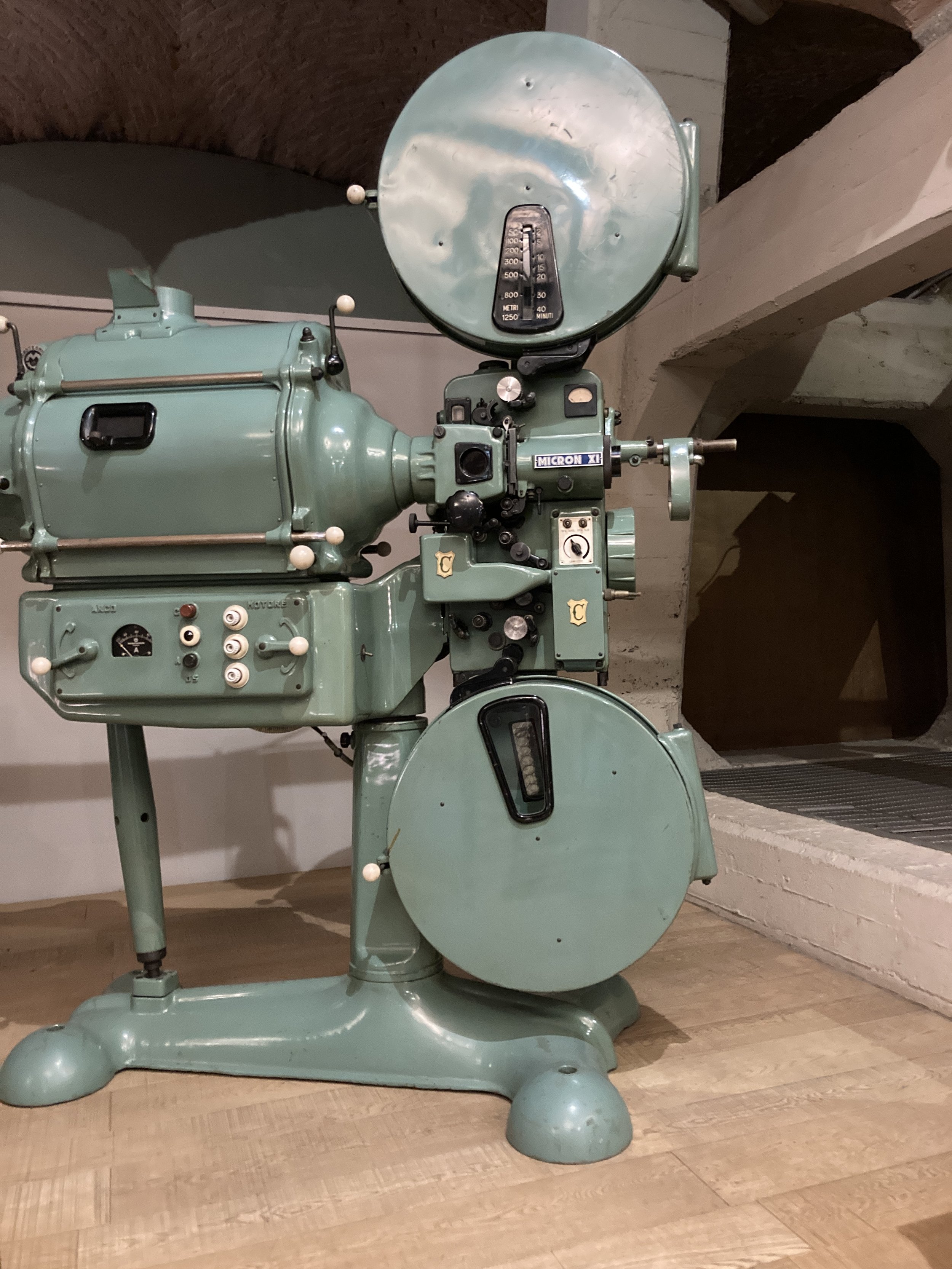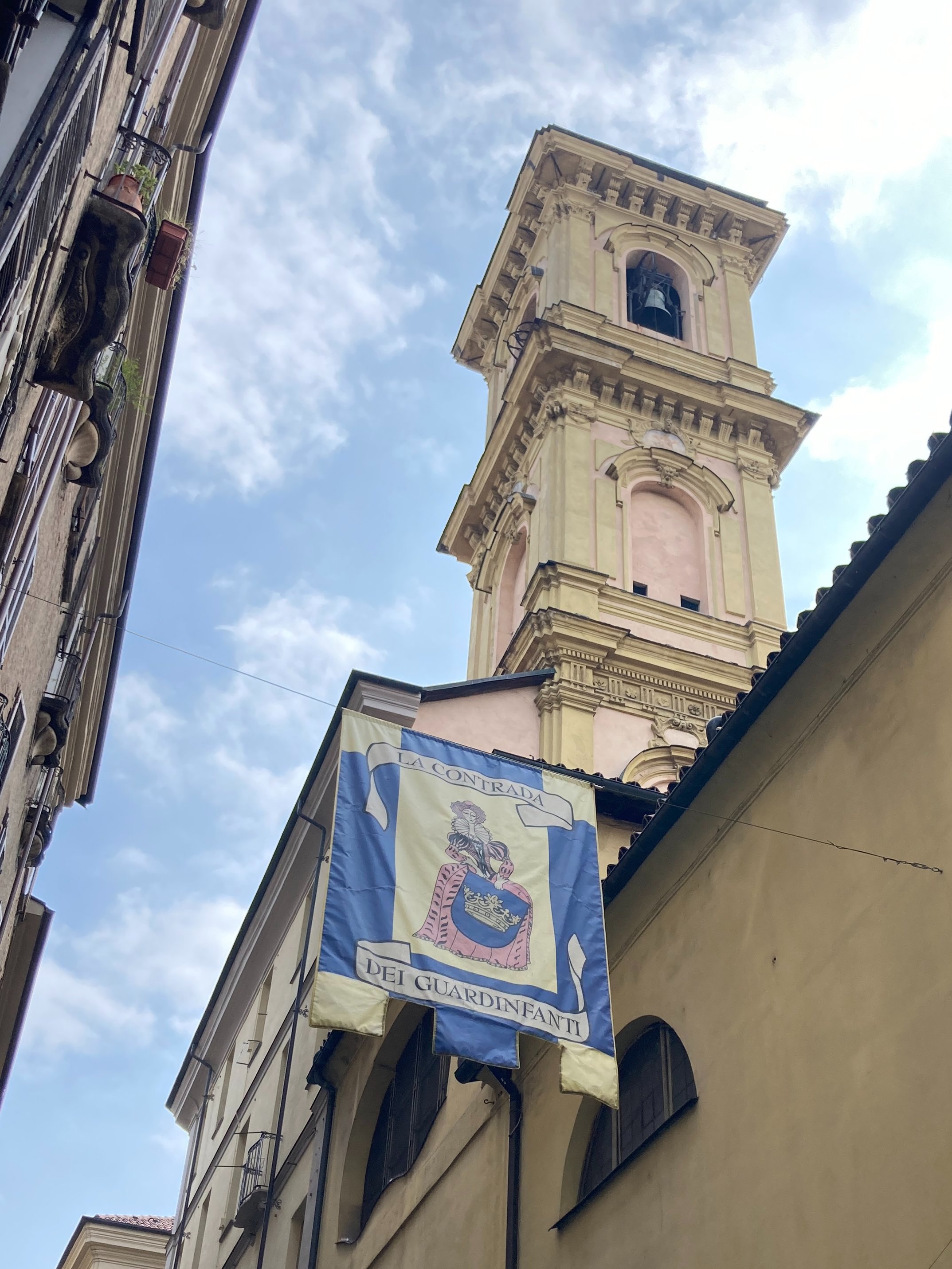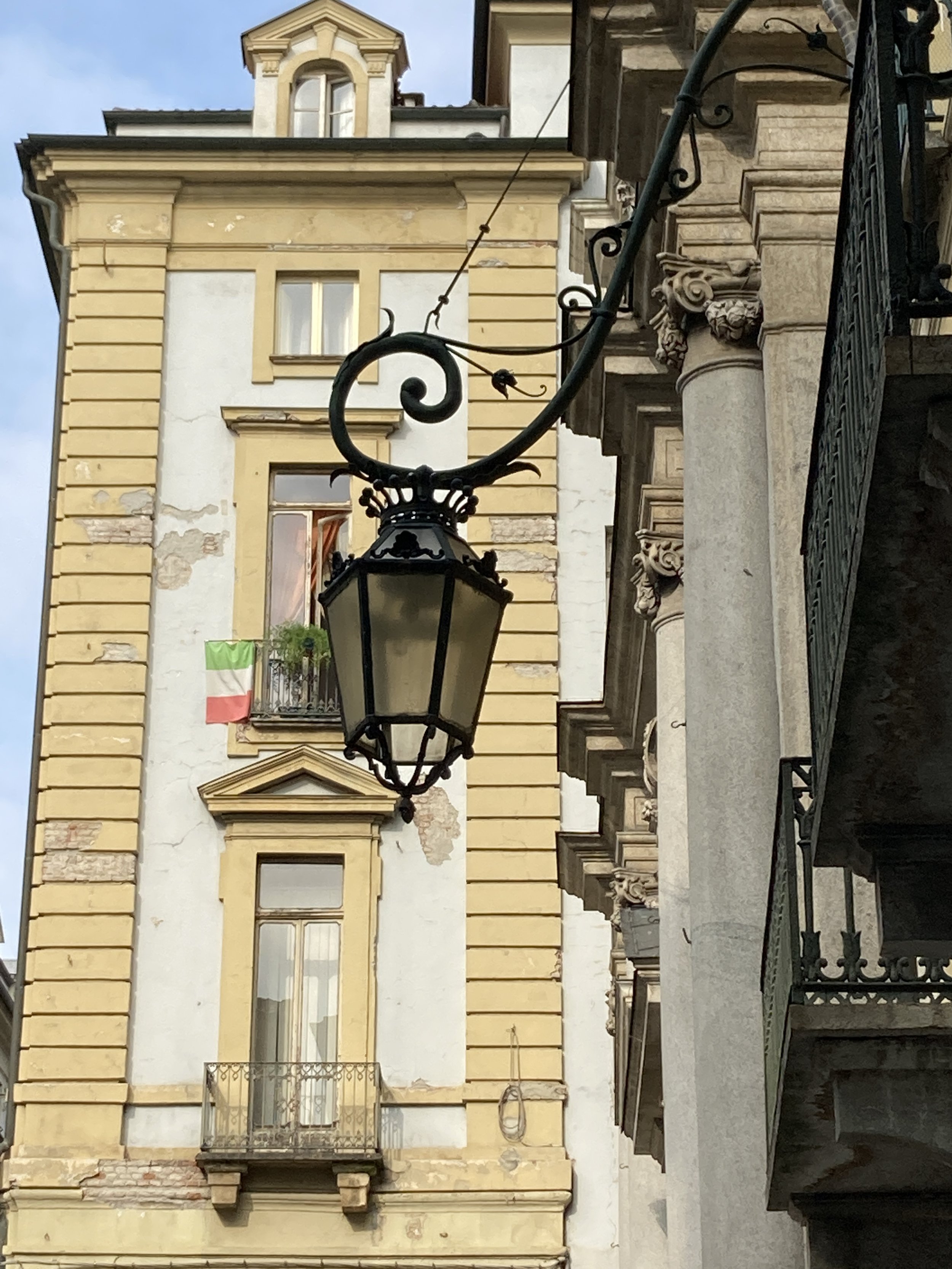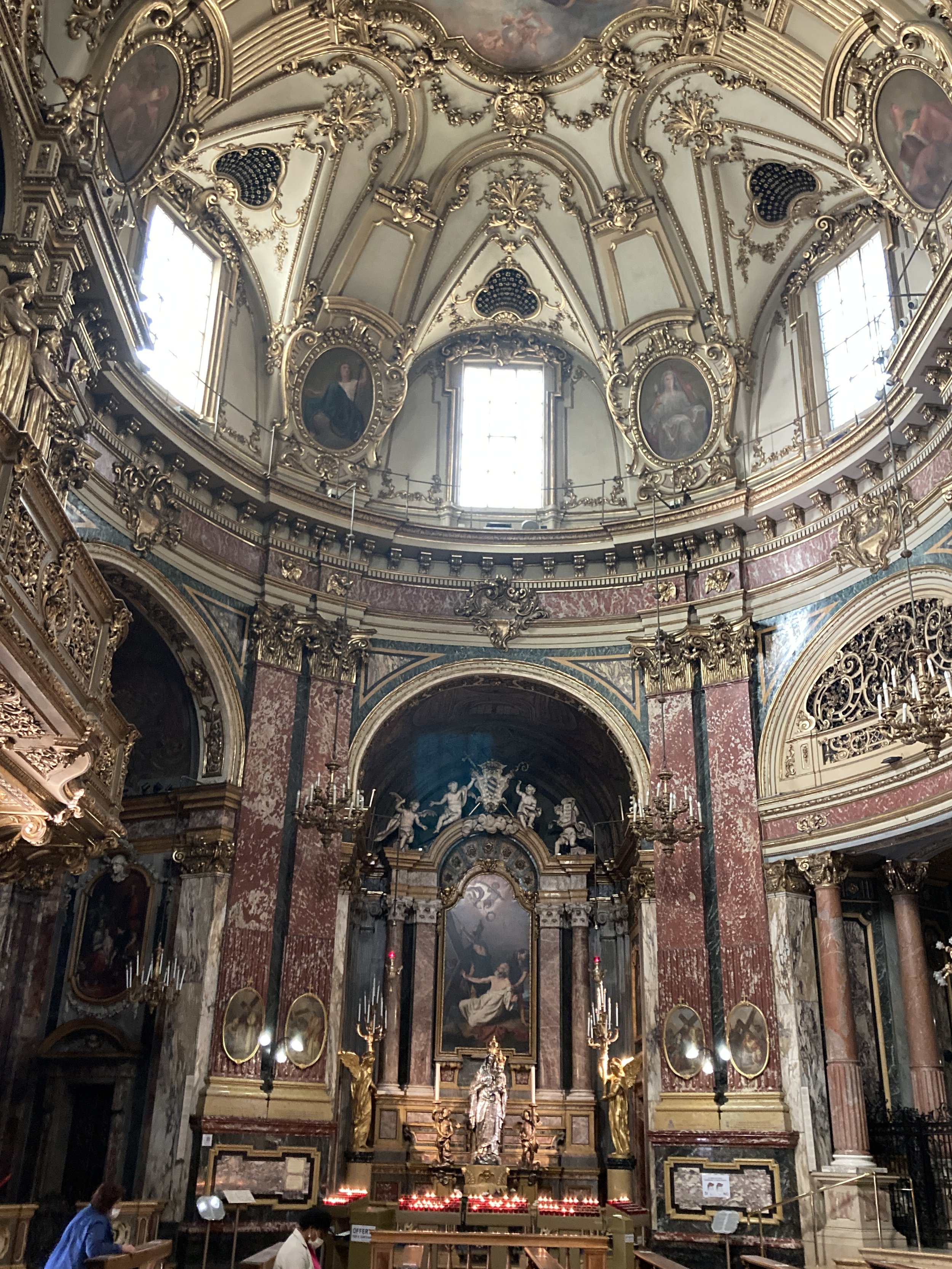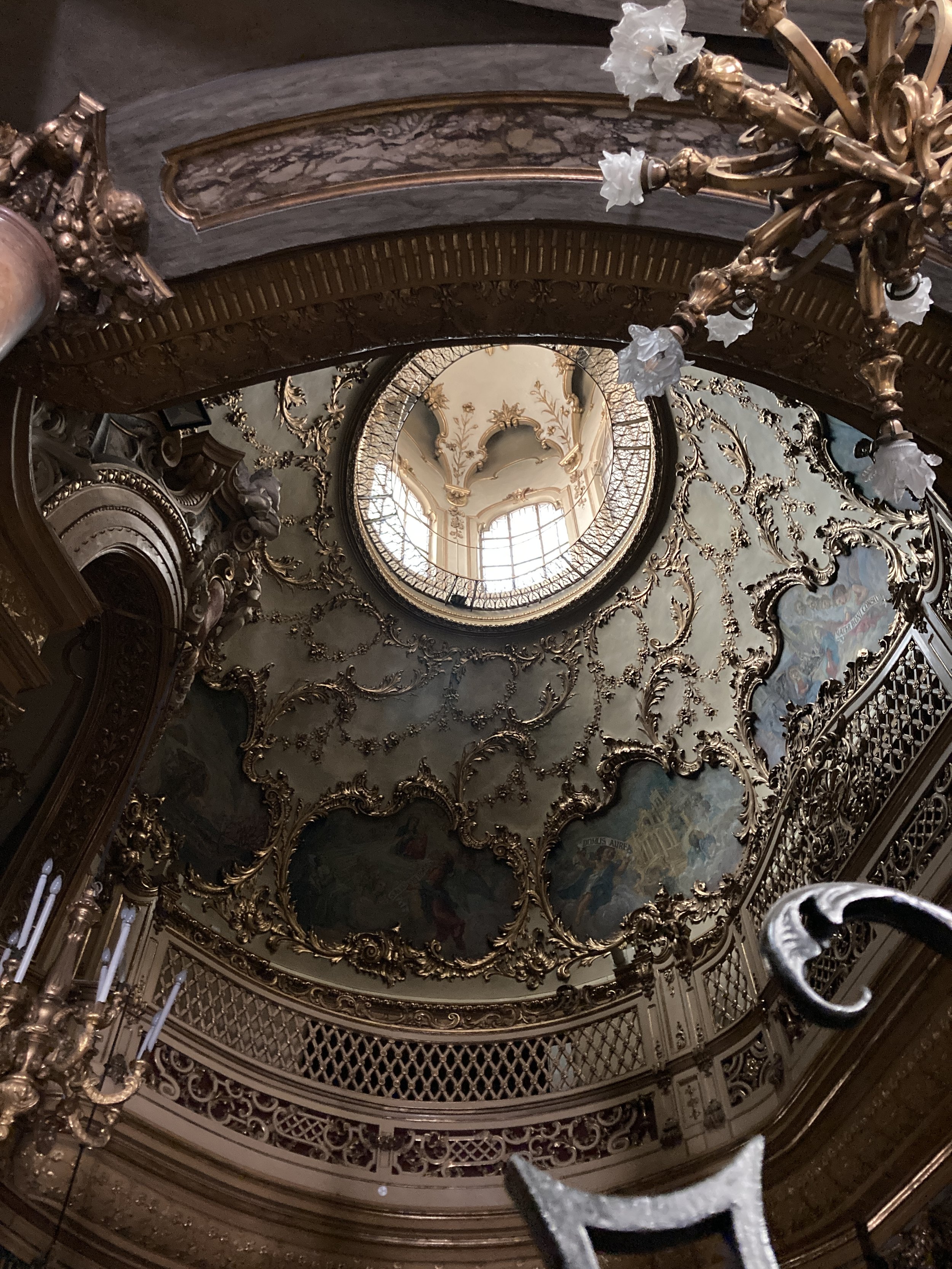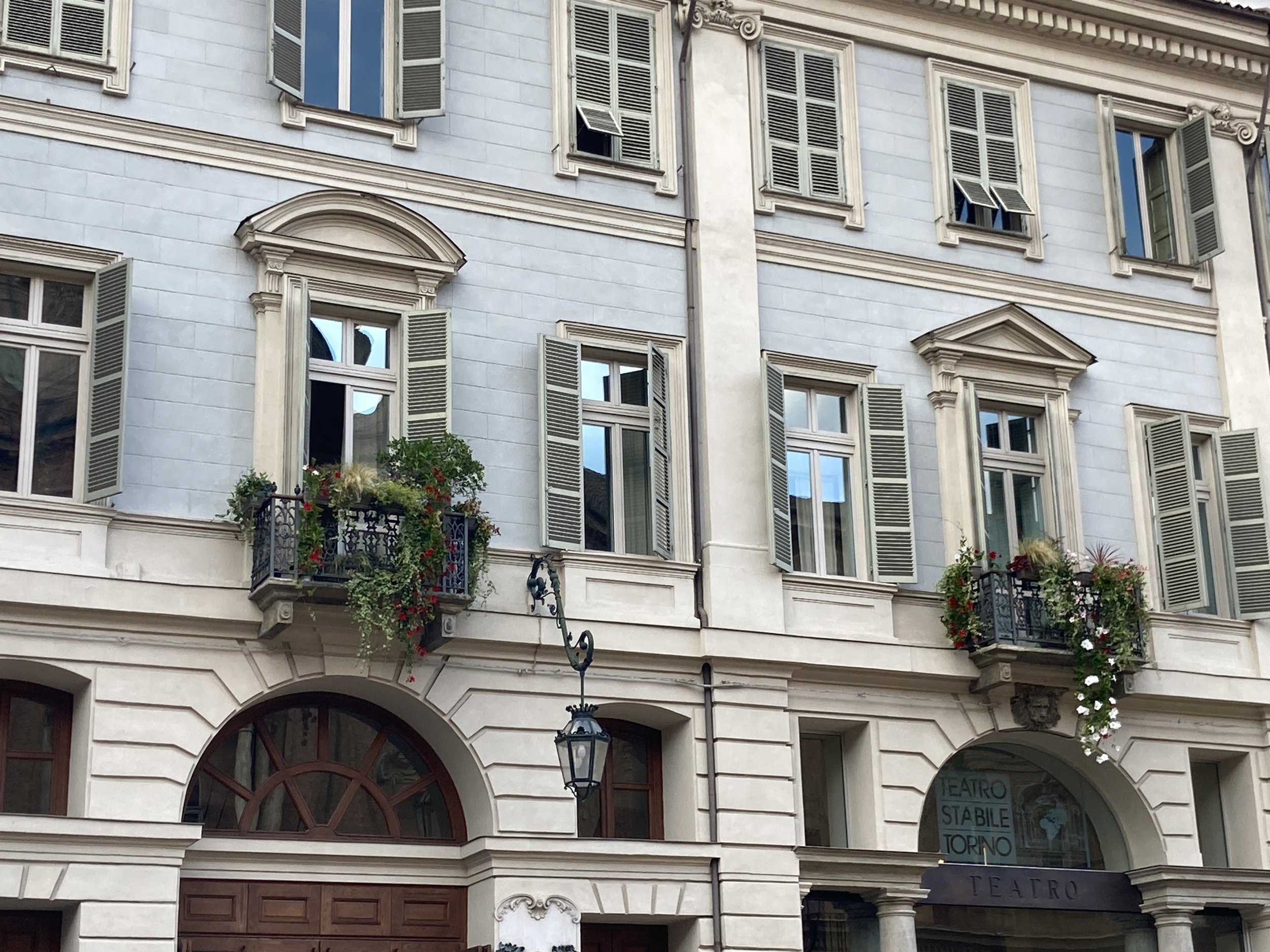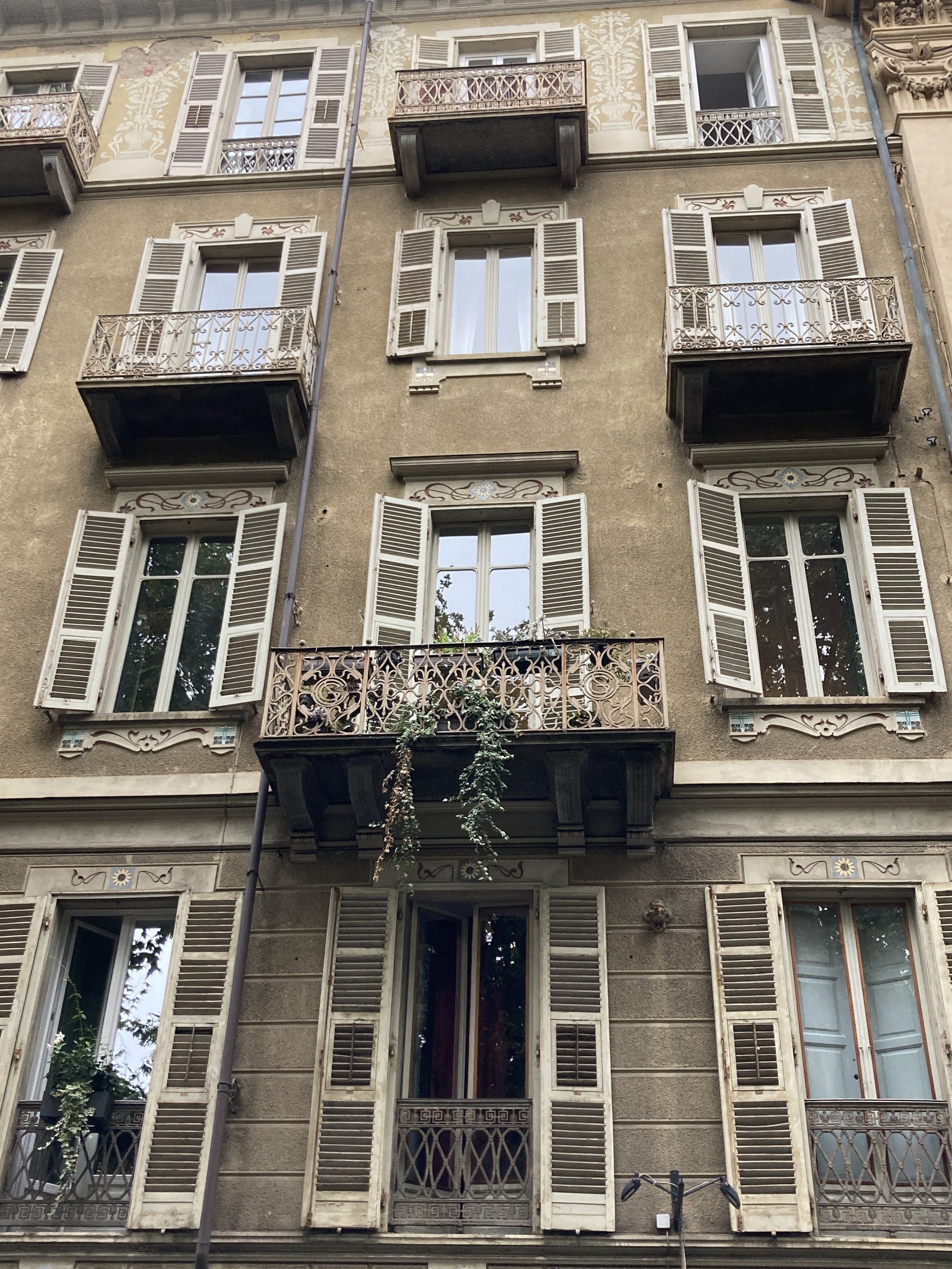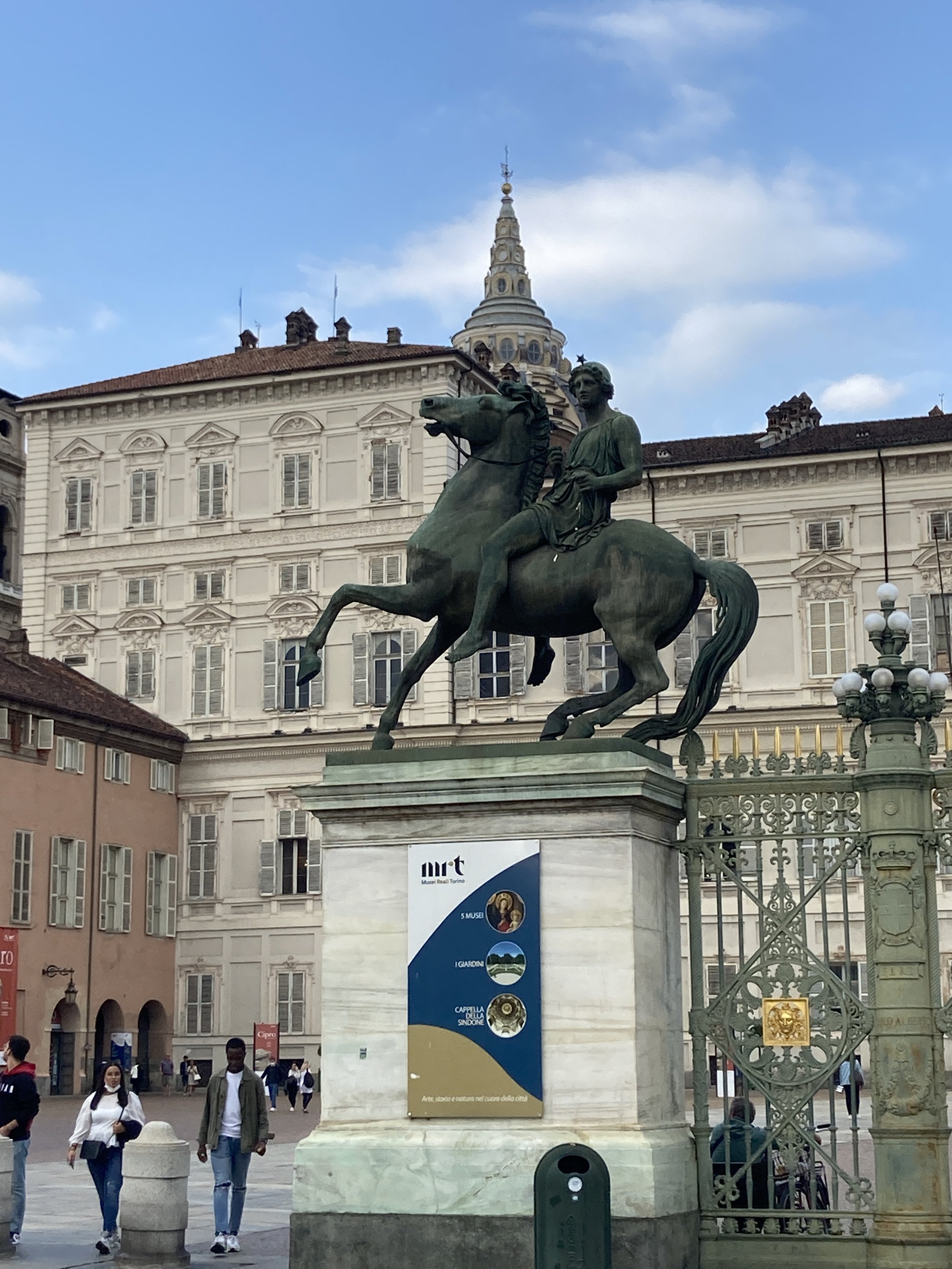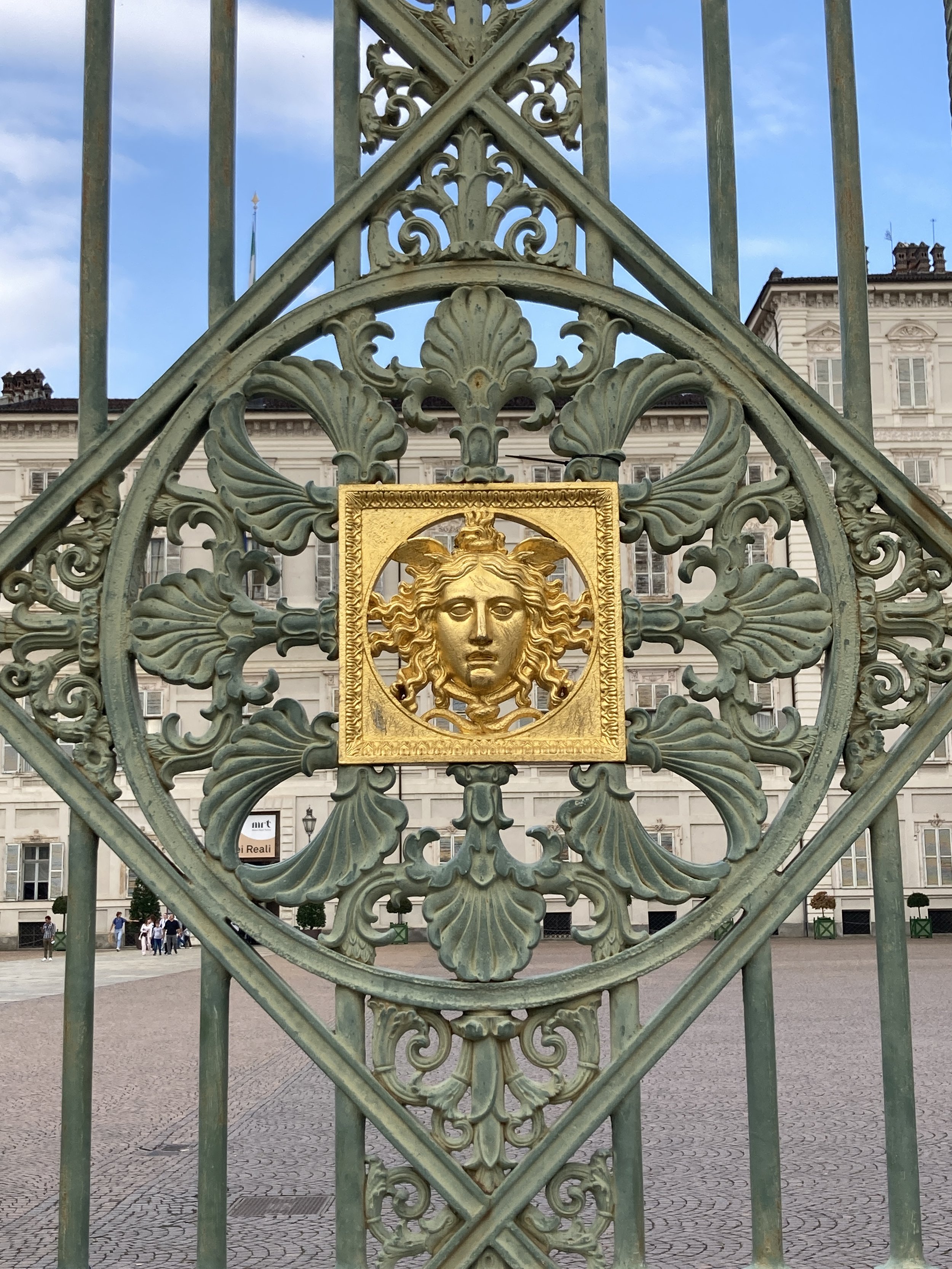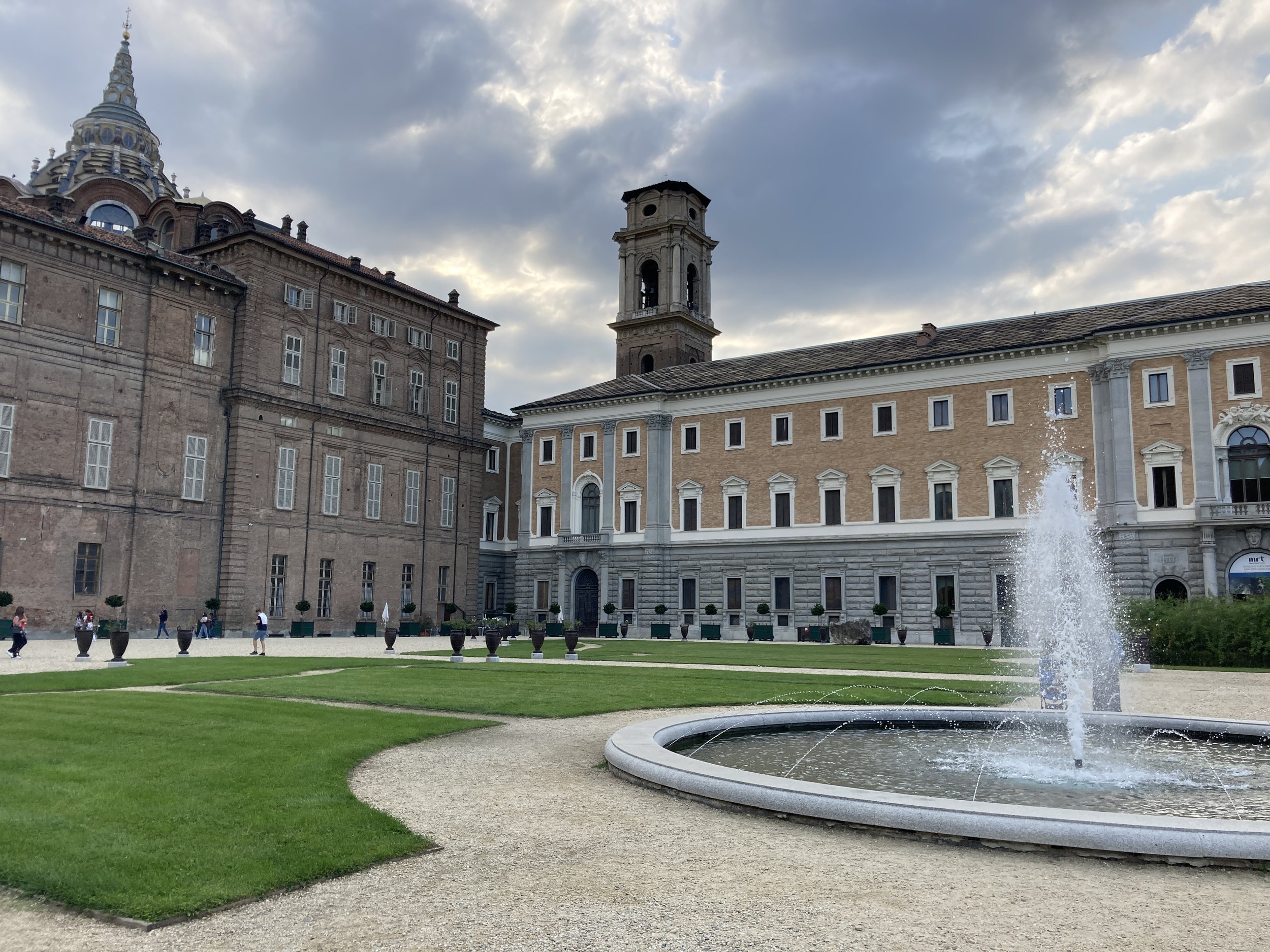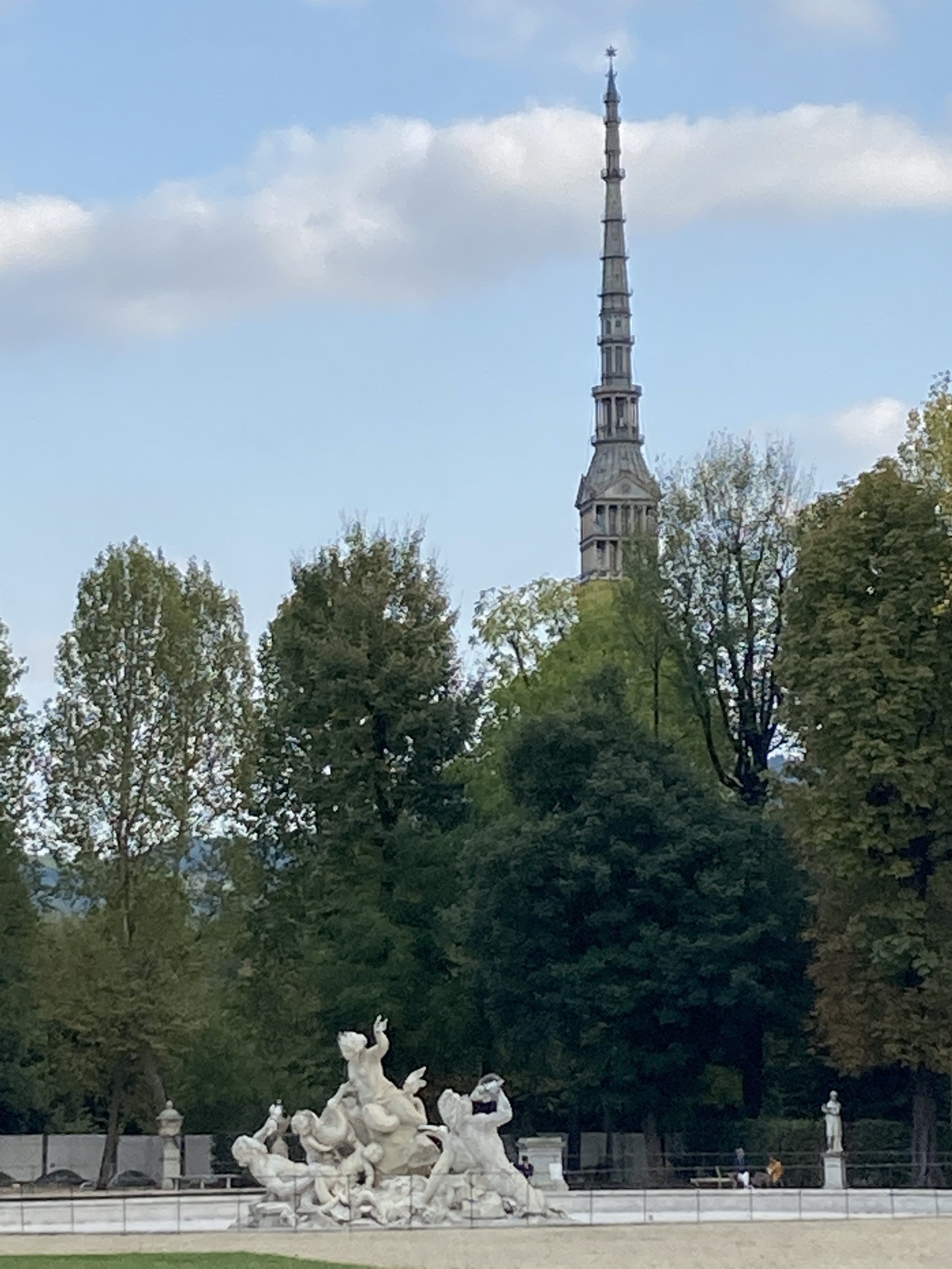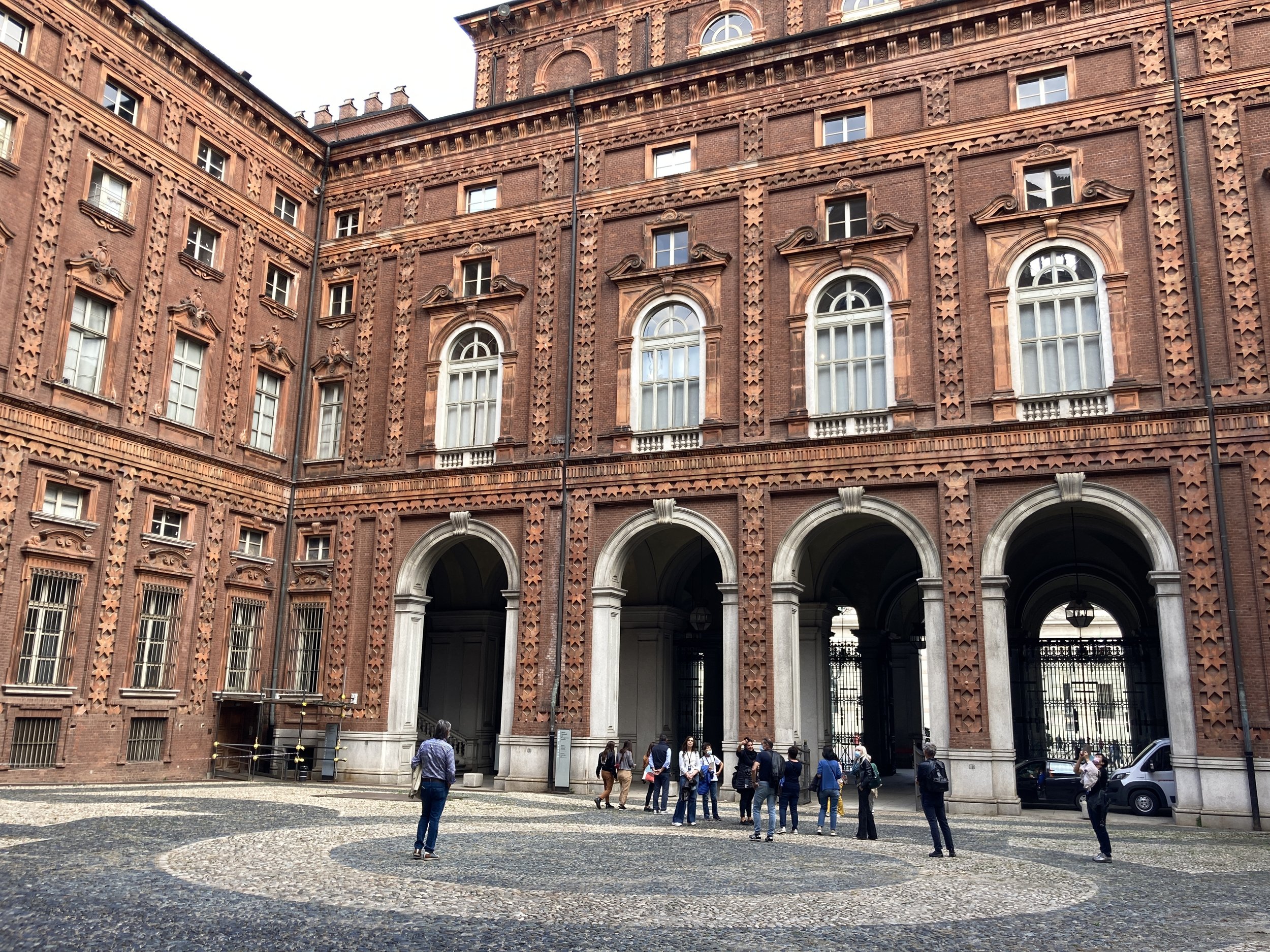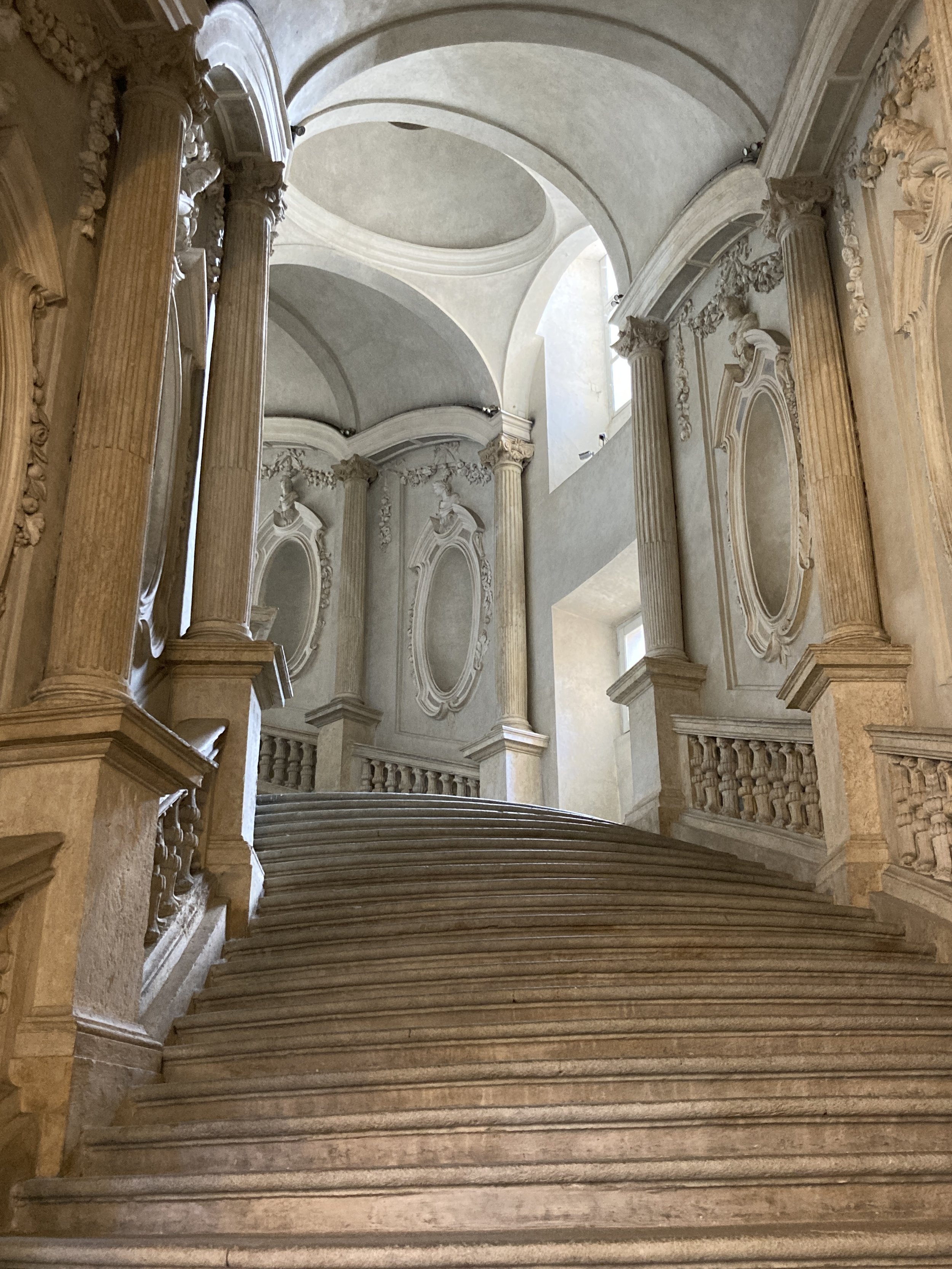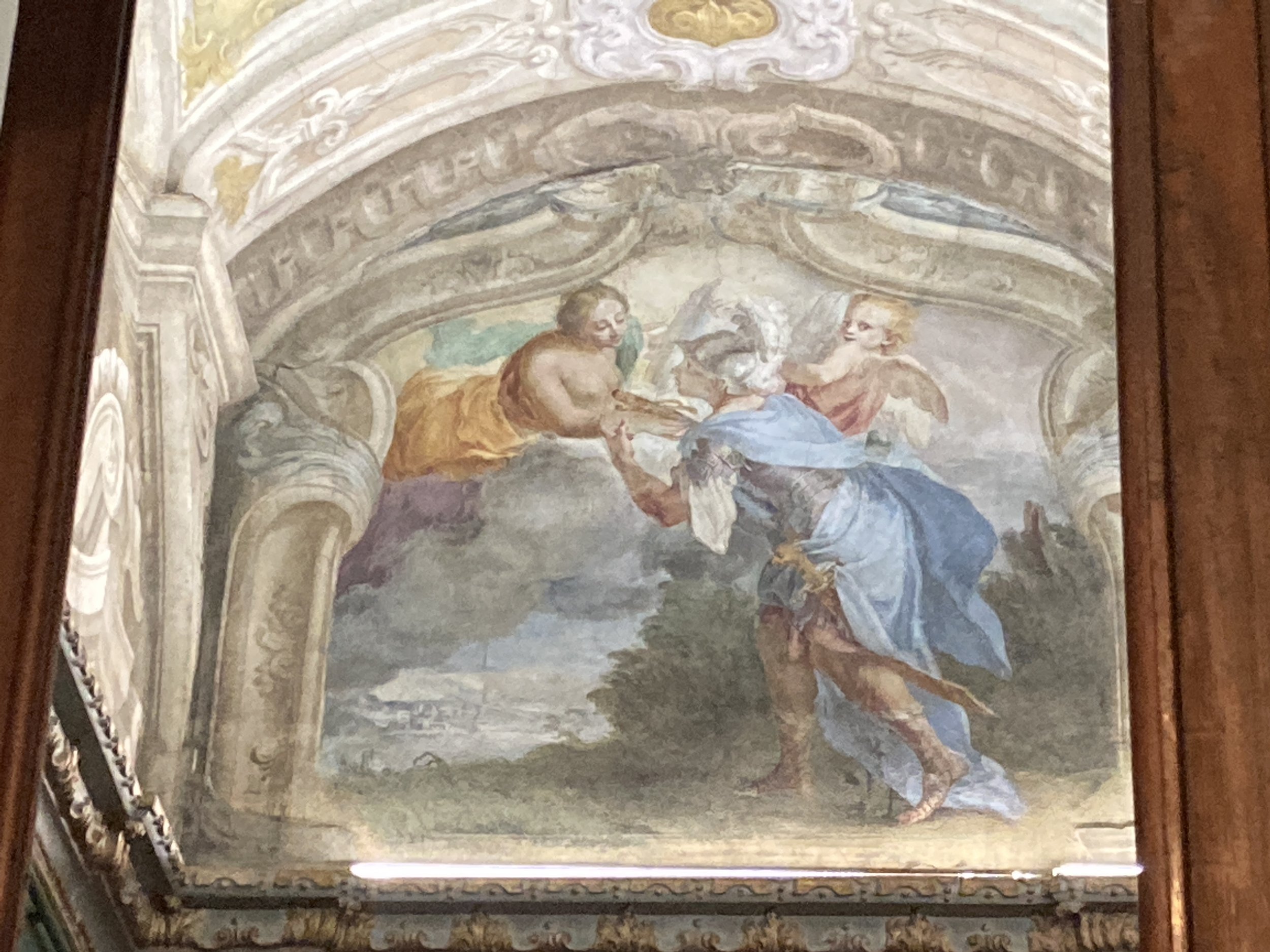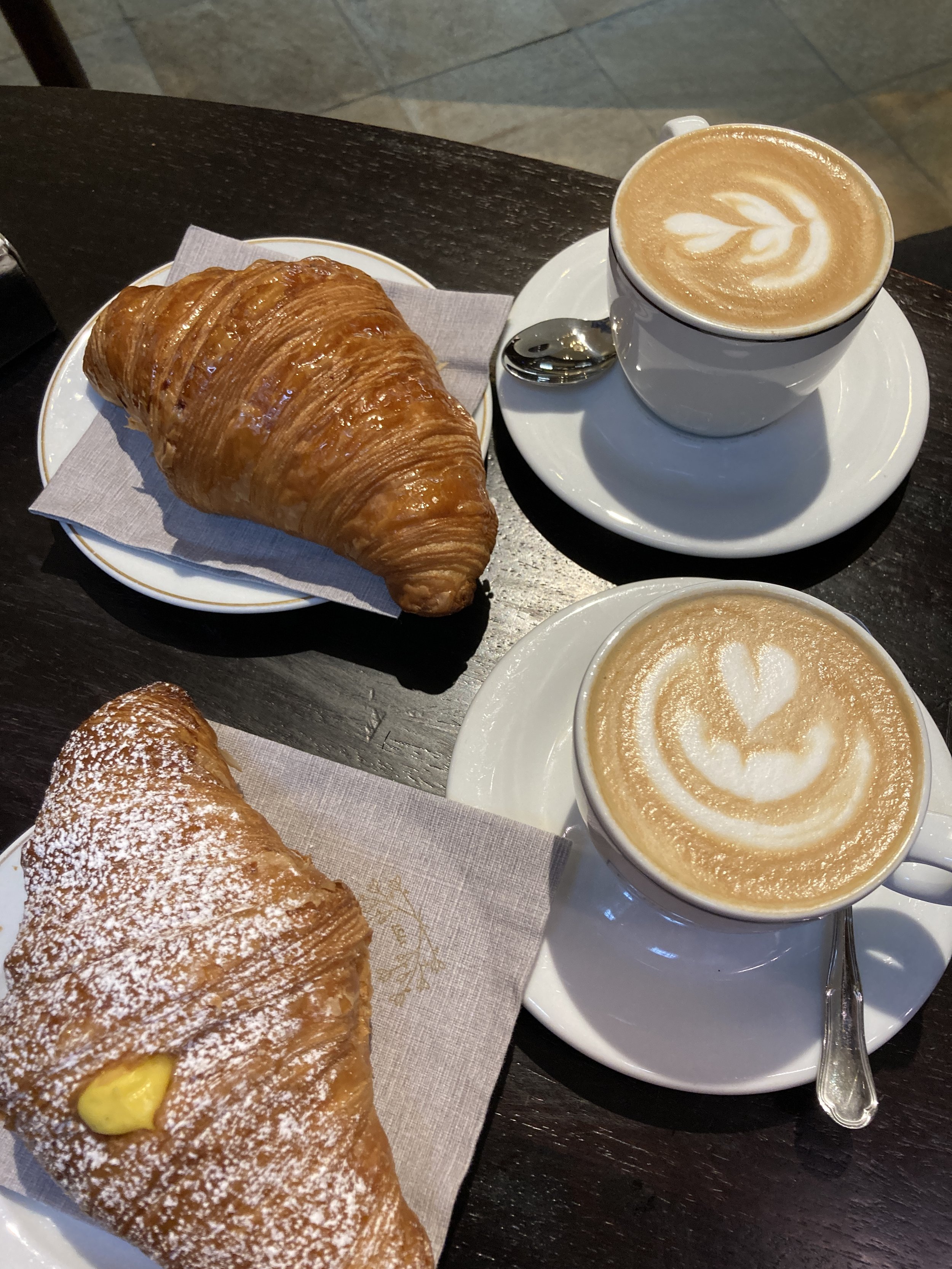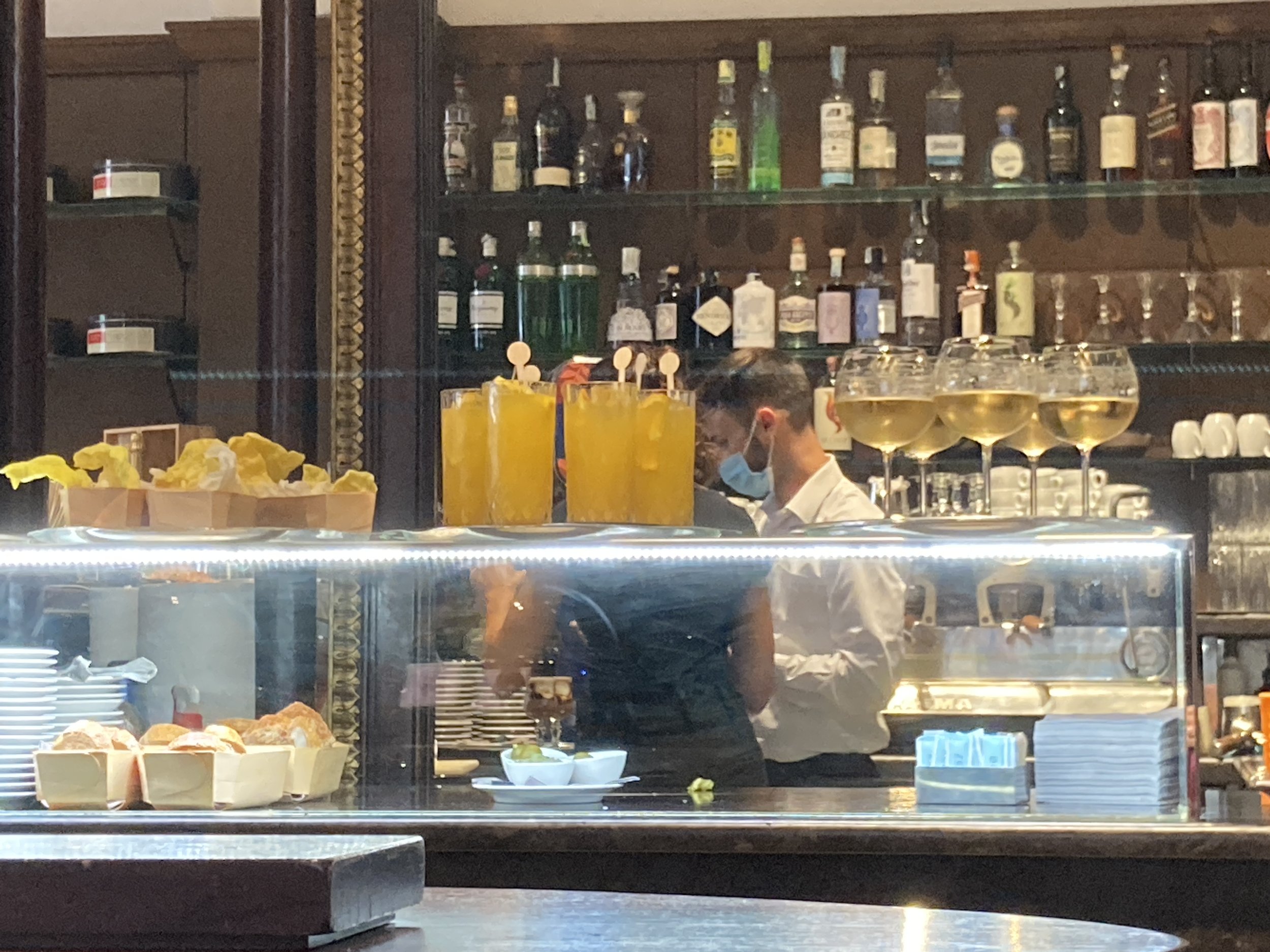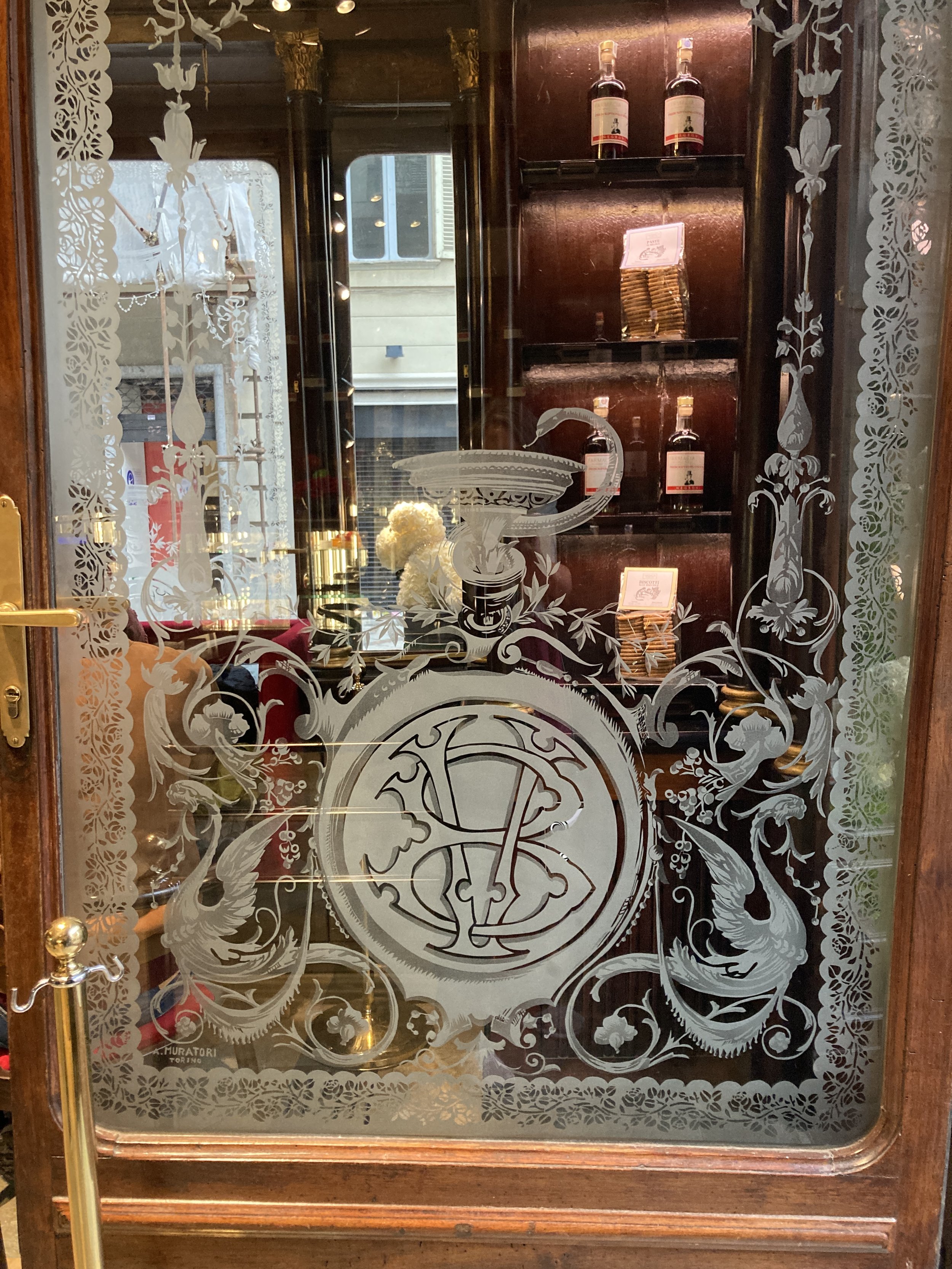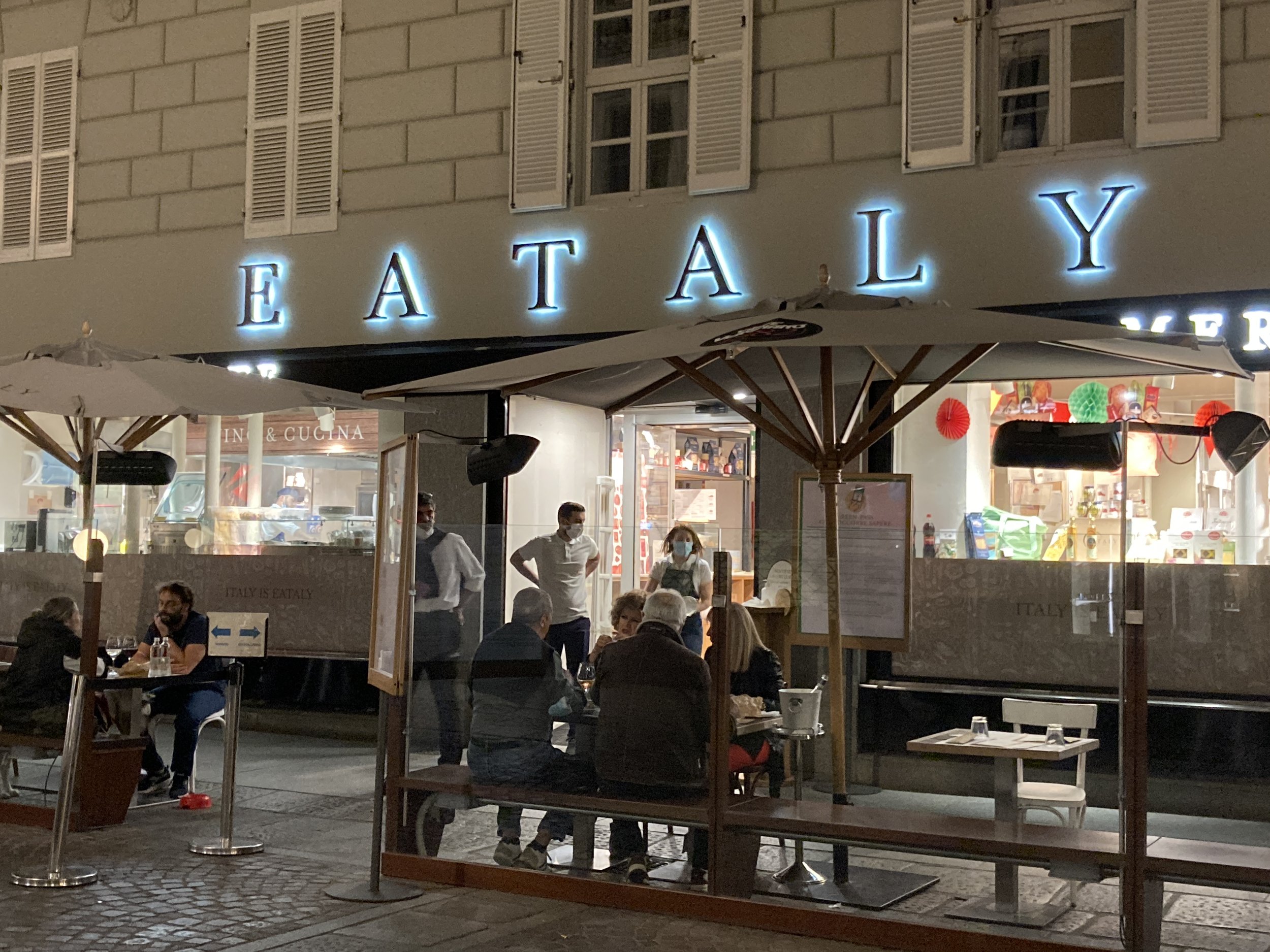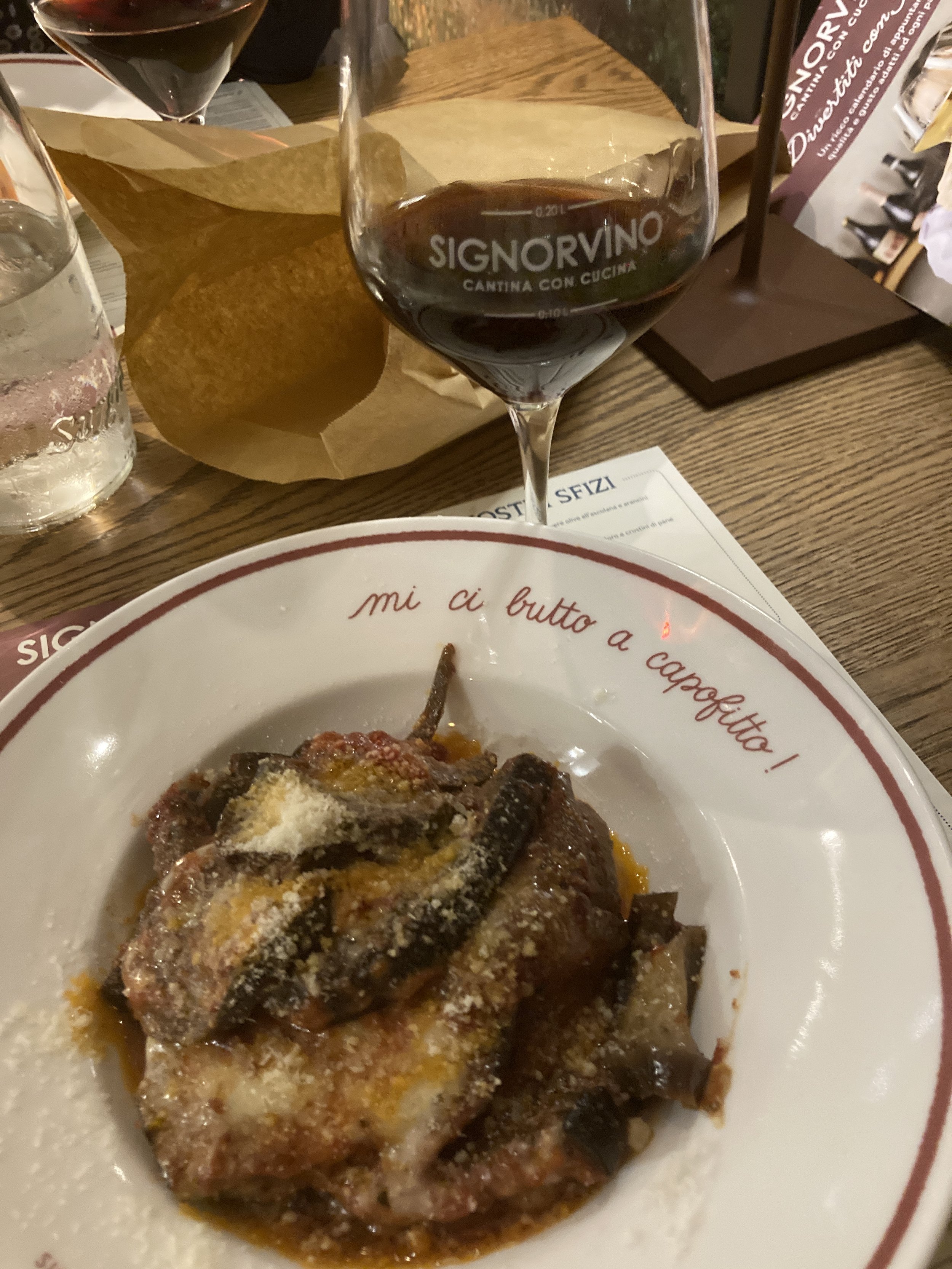Torino: 4 days, 3 Museums
Pausing for some down time between museum visits is essential!
I love visiting Italian cities and their many fabulous museums. But … too much museum time can be overwhelming! The last thing I want to do when exploring a new place is to spend all of my time dashing from one museum to the next in an effort to see it all. Travel is so much more enjoyable when there is a balance between select museum visits and time for all the other things a city has to offer - gardens, architecture, music, nature, markets (especially markets!), out-of-the-way neighborhoods, outdoor monuments, shops. Just sitting in a cafe sipping a cappuccino or a having a glass of wine in a local enoteca, watching daily life unfold around me, is a huge part of the fun.
When I visited Torino last fall I spent many happy hours wandering through the center of town, exploring the Quadilatero Romano neighborhood, enjoying the large piazzas and doing some window shopping. I also made plans to visit two museums - the Musei Reale (The Royal Museums, which include the Palace of the Savoys and the Chapel of the Shroud) and the Museo Egizio (Egyptian Museum). Truth be told, it was the Savoy Palace that I most wanted to see. The whole idea of Egyptians in Italy seemed a bit strange to me, but it was top of the wish list for my travel companion, and highly recommended by several friends, so I was game to give it a try (and I am very glad that I did).
The entrance hall of the Royal Palace in Torino.
To fit both venues into a short visit, and avoid museum overload, we booked a combined tour through the agency Get Your Guide. The approximately 4 hour tour began at the Royal Museums and finished in the Egyptian Museum. Sofia, our tour guide, was fantastic and balanced explanations in both Italian and English for our mixed-language group of about 10 people. She was equally knowledgeable about the Royal Museums and the Egyptian Museum. She achieved the perfect mix of fact, legend, history, and interpretation of the exhibits.
Throne Room, Royal Palace
The two museums are dramatically different. The grand staircase in the Savoy Palace, the beautiful furnishings, the history of the Savoy family which is integral to the birth of modern Italy, all speak of a gracious and easily imagined era. Because the palace is still furnished, there is a real sense of how the Savoys lived here - the elegant Throne Room, the opulent dining room, the ball room, the hidden balconies for musicians, the exquisite wood work, the sculptures. The opulence is dazzling.
There is also a long gallery filled with a collection of armor and armaments. You can even get to know the former king’s favorite horses! Something fascinating is to be found around every corner.
The tour of the palace ended in the chapel build to house the Shroud of Turin. The chapel was fairly recently reopened after more than 20 years of restoration following a fire. The Shroud itself is nowhere to be seen (the nearby Duomo hosts an informative shroud exhibit but the real thing is too valuable to display), but the chapel itself is a work of art. The architecture, especially of the unique cupola (dome), and the sculptures are breathtaking (or, to use one of my favorite Italian words, mozzafiato!). The chapel was the perfect ending to the Royal Museums tour.
The multilayer hexagonal dome in the Chapel of the Holy Shroud rises high above the dark marble interior of the chapel.
On the other hand, and from a very different era, the Egyptian museum is filled with mummies and sarcophagi.
The story of how Torino came to host this collection of artifacts - and the faked Egyptian artifact that started the collection - made a fun story at the start of the tour. The guide’s explanations put this remote era into perspective and helped the artifacts blend together into a cohesive story. I was glad to have experienced this!
Although my goal was to just see these two museums, our last morning in Torino was gray and rainy. Not a good day for the outdoor exploration we had planned.
Instead, my companion and I walked over to see the Mole Antonelliana. This architectural stunner, designed by Alessandro Antonelli, is the symbol of Torino. It is such an iconic image in Italy that it is engraved on the Italian 2 euro coin. The spire rises high above the city and is visible from quite a distance. Once upon a time this was the tallest brick building in the world, it may still be the most beautiful. The bottom of the building is square, with another square portion siting on top. Above that rises a dome, topped by a very tall spire.
The Mole Antonelliana as seen from the gardens of the Royal Museums
Up those cables travels the elevator - quite the view !
Right through the middle of the building’s interior a glass elevator rides up cables to give visitors a view from high above.
Originally destined to become a synagogue (no doubt without that elevator), today the building houses the Museo Nazionale del Cinema (National Cinema Museum).
I had not intended to go to inside the museum, but the outside of the building was so impressive that I really wanted to get a peak inside. I was totally unprepared for the experience of the cinema museum inside the Mole Antonelliana. A riot of sound, color, and visual effects fill the main hall. Big screens around the room show a variety of videos - there were even lounge chairs to sit back and take it all in! Exhibits trace the history of movies back to shadow images, stereoscopes, and the science of optics. There are collections of movie posters, costumes, special effects, and characters. It was too much to appreciate in a single short visit and definitely a place I will return to on my next trip to Torino (I think my grandkids would love it too).
The next time I get to Torino there are even more museums to visit - Ancient art in the Palazzo Madama and Italian national history at the Museo Nazionale del Risorgimento. I am glad that I didn’t try to do them all in a single trip!


